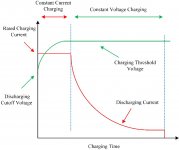2.5kW water heater element in Annex D, Example D2(a) would also be continuous load.
2500W cold start would take 3.5 hrs for typical residential 40 Gallon heater with water @ 50 Deg.F
The calculators on this page compute how long it takes to heat water, how much energy is consumed, and how much heating power is required.

gettopics.com
Since water heater tanks maintain temperature, cold starts require power failures, so actual use should be considered.
* Average shower is 16 Gallons of water in 8 minutes @ 75% hot = 12gal x 2 people = 24gal
* Average washing machine is 7 to 20 Gallons per load @ 50% hot = 10gal
* Average dishwasher is 4 to 6 Gallons per load @ 80% hot = 5gal
Miser shower heads & efficient appliances use less water, but dwellings may take multiple showers in the morning, and some take 20 minute showers. Standard 4800W elements handle ~60gal in 3 hrs, per above calculator link.
Example D2(a) assumes <=35gal to get <=3 hrs with 2500W elements, not related to later applied demand factor in 220.82(B).


